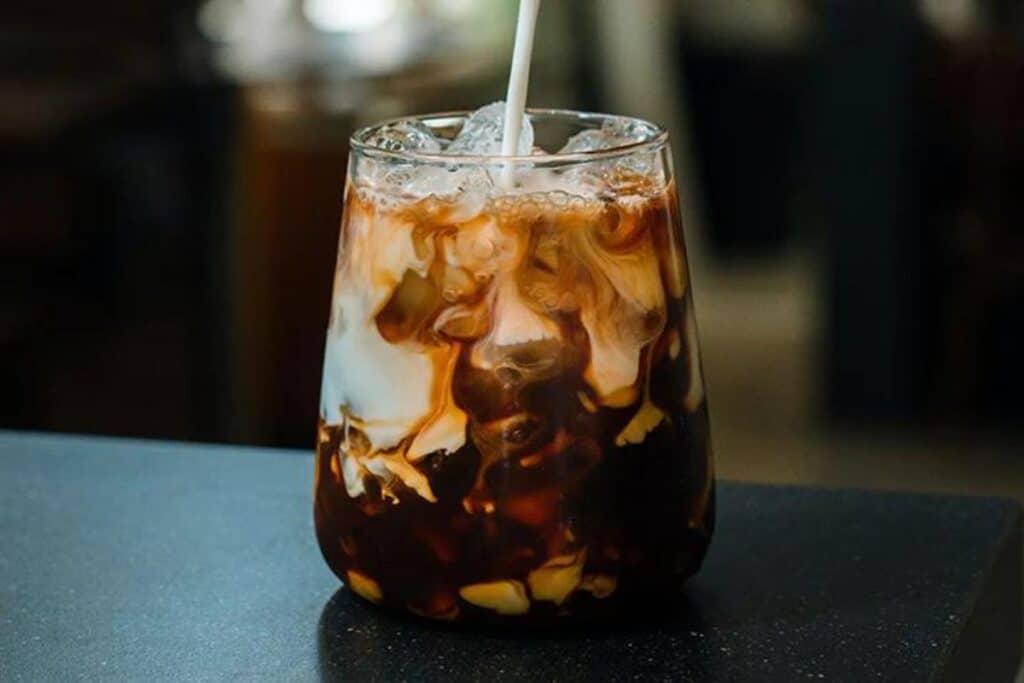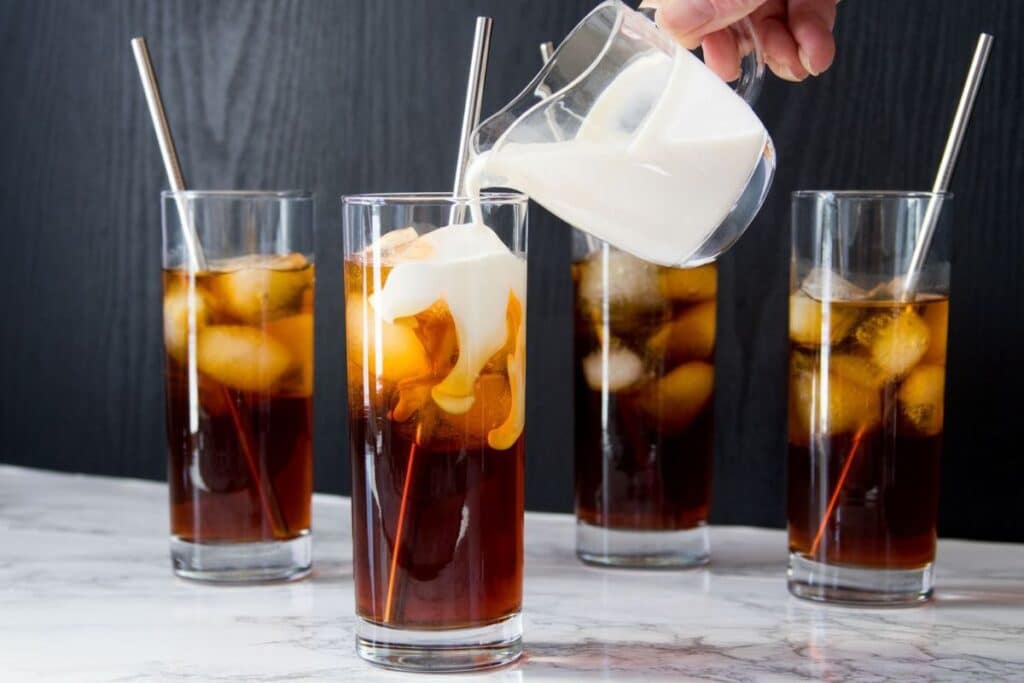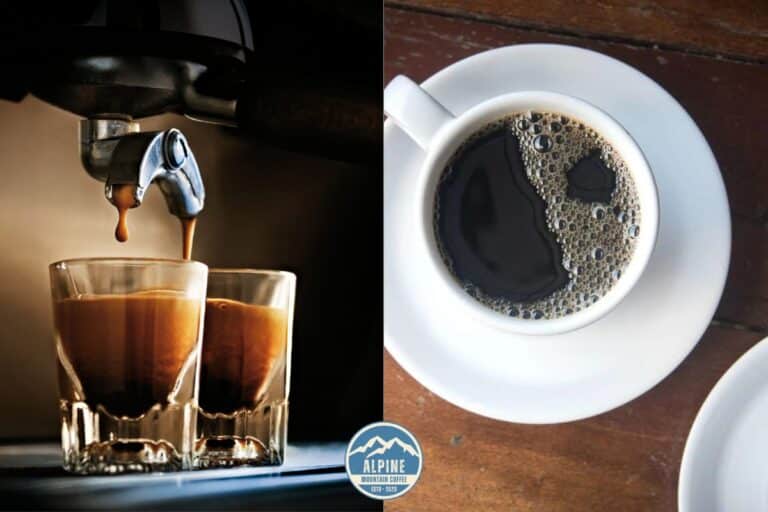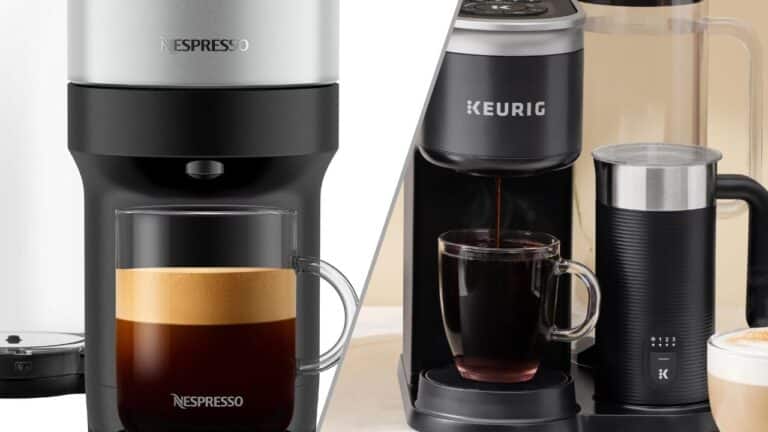Cold brew coffee is a unique type of coffee that’s brewed by steeping coffee grounds in cold or room temperature water over an extended period of time. Unlike traditional coffee brewing methods which involve hot water, the cold brewing process results in a coffee that is smooth, well-rounded, and less acidic. Making it a favorite choice among many coffee drinkers. Its popularity has been on the rise globally, finding its way from coffee shops into homes. With this in mind, let’s delve into the world of cold brew coffee and explore what makes it distinct and increasingly appreciated among coffee lovers worldwide.
The purpose of this article is to provide a comprehensive guide to cold brew coffee. Our goal to shed light on what cold brew coffee is, its origins, how it’s made, its flavor profile, health benefits and potential downsides. In addition, we will provide tips for serving and enjoying cold brew coffee. This is targeted towards both coffee connoisseurs interested in expanding their knowledge and novices curious about this increasingly popular beverage.
The History of Cold Brew Coffee

While the exact origins of cold brew coffee are somewhat unclear, it’s widely accepted that the method originated in Japan in the 1600s. Cold brew coffee was known as ‘kyoto-style coffee.’ Japanese traders were likely influenced by tea brewing techniques, used a slow-drip method to make coffee. The technique eventually spread to other parts of the world, with various cultures adopting and adapting the process over the centuries.
The global popularity of cold brew coffee is a relatively recent phenomenon. Although cold brew had been enjoyed for centuries in various cultures, it was predominantly a niche market until the early 2000s. The rise of specialty coffee shops in the U.S., particularly Starbucks and its introduction of cold brew coffee in 2015, brought this unique brew method into the spotlight. Its novelty, combined with its rich and smooth taste, appealed to consumers, making it a summer staple and later, a year-round favorite.
Today, cold brew coffee holds a significant position in the coffee market. Both small, independent coffee shops and large chains offer cold brew as a standard part of their menu. Supermarkets and online retailers also sell pre-made cold brew coffee, in response to the growing consumer demand. According to market research, the global cold brew coffee market is expected to continue growing, fueled by consumer interest in craft beverages and a willingness to try different types of coffee brew methods.
What is Cold Brew Coffee?

Cold brew coffee is a unique method of coffee preparation that involves steeping coffee grounds in cold or room temperature water for an extended period of time, typically 12 to 24 hours. This long extraction process allows the coffee to slowly infuse into the water, resulting in a concentrated coffee brew. The final product is a coffee that is strong, smooth, and often less acidic than coffee brewed with hot water.
Although both cold brew and iced coffee are served chilled, they are fundamentally different in their preparation. Iced coffee is brewed quickly with hot water, much like regular coffee, and then cooled down by pouring over ice or refrigerating. This can often lead to a more acidic taste and potential dilution from the melting ice. Cold brew, on the other hand, is brewed cold from the start. It ends to have a smoother, more full-bodied flavor profile because of the slow extraction process.
While technically any type of coffee bean can be used to make cold brew coffee, certain varieties are often favored. Medium to dark roast beans are commonly used because they yield a robust and well-rounded flavor. However, the choice of beans often comes down to personal preference. Some people prefer to use single-origin beans for their unique flavor characteristics, while others might prefer blends for their balance and complexity. Regardless, the key to a good cold brew is using freshly roasted and coarsely ground beans.
The Process of Making Cold Brew Coffee

Step-by-step guide to making cold brew coffee at home:
- Start with a high-quality, coarsely ground coffee to prevent the final brew from becoming muddy. The ideal ratio is one part coffee to four parts water.
- Place the coffee in a large jar or a French press.
- Gradually add room temperature or cold water to the grounds, ensuring all the coffee is soaked.
- Stir gently to combine, then cover and leave it to steep for 12-24 hours at room temperature.
- Once steeped, strain the coffee through a fine-mesh sieve or a coffee filter to separate the liquid from the grounds.
- Store your cold brew coffee concentrate in the refrigerator. It can be diluted with water or milk and served over ice.
Commercial production of cold brew coffee follows a similar process but on a larger scale. Specialized cold brewing equipment is used to steep a large volume of coffee grounds in water. The steeping period can be controlled to ensure consistency in the taste. After steeping, the coffee is filtered, often using commercial-grade filtration systems. Some companies may also pasteurize or use other preservation methods to extend the shelf life of their cold brew products. The final product is then bottled or canned and shipped to retailers.
The basic equipment and ingredients for making cold brew coffee at home are quite simple:
Equipment: A large jar or a French press, a fine-mesh sieve or a coffee filter for straining.
Ingredients: Coarsely ground coffee and fresh, cold water.
Optional: Ice for serving, milk or cream for diluting, and sweeteners like sugar or syrups as per preference.
The Taste Profile of Cold Brew Coffee

Cold brew coffee is known for its unique flavor profile. The slow and cold extraction process allows the coffee to retain its inherent sweet flavors while minimizing the extraction of harsh compounds. Thus resulting in a brew that is generally smoother, less acidic, and less bitter than hot-brewed coffee. Additionally, cold brew often exhibits pronounced notes of chocolate, caramel, and fruit, depending on the coffee beans used.
In comparison to hot brewing methods like drip or espresso, cold brew is often less acidic and has a mellower, more full-bodied flavor. Where espresso might highlight a coffee’s brightness and acidity, cold brew emphasizes the coffee’s sweetness and body. Compared to iced coffee, which is essentially hot-brewed coffee cooled down, cold brew tends to be less diluted, more concentrated, and more complex in flavor.
The flavor profile of cold brew coffee can vary significantly depending on the brewing time and the coffee beans used. A longer steeping time will result in a stronger, more robust brew. A shorter steeping time may produce a lighter, more subtle flavor. The type of coffee used also plays a crucial role. For instance, a dark roast might yield a brew with strong chocolatey and nutty notes. On the other hand, a light roast might produce a brew with more fruity and floral undertones. The origin of the coffee beans can also impact the flavor, with beans from different regions exhibiting distinct taste profiles.
Serving and Enjoying Cold Brew Coffee

Cold brew coffee is typically served over ice. Since it’s concentrated, it’s often diluted with water or milk according to personal preference. Some enjoy it black, relishing its strong, full-bodied flavor, while others prefer adding a dash of milk or cream to soften and enrich the taste. Sweeteners like sugar, honey, or flavored syrups can also be added. Despite its name, cold brew coffee can also be served hot by diluting it with hot water or warmed milk.
There are many ways to get creative with cold brew coffee. Here are a few popular variations:
- Cold Brew Latte: Mix cold brew with equal parts of cold milk, add a sweetener if desired, and serve over ice.
- Vanilla Cream Cold Brew: Add a splash of vanilla syrup to your cold brew and top it off with a generous amount of sweet cream.
- Cold Brew Smoothie: Blend cold brew coffee with a banana, a spoonful of peanut butter, and a splash of milk for a refreshing coffee-infused smoothie.
- Cold Brew Martini: Combine cold brew coffee, coffee liqueur, and vodka for a sophisticated cocktail.
- Spiced Cold Brew: Add spices like cinnamon or nutmeg to your cold brew for a flavorful twist.
Cold brew coffee’s unique flavor profile pairs well with a variety of foods. For breakfast or brunch, it goes well with pastries, toast, and fruit. Its smooth and full-bodied flavor also pairs nicely with desserts. Especially chocolate-based ones like brownies or chocolate cake. For a savory pairing, try it with a classic club sandwich or a cheese and charcuterie board. It’s always worth experimenting to find your personal favorite pairing.
Conclusion
We’ve delved deep into the cool universe of cold brew coffee in this article. We’ve chatting about its roots, what it is, how to make it, and its unique taste. We’ve tackled the varied ways to enjoy and serve this refreshing brew, debunked some common myths, and offered up handy solutions for any brewing hiccups you might encounter at home.
The surging popularity of cold brew coffee speaks volumes about its distinct charm and adaptability. With its silky, low-acidic flavor and countless ways to relish it, it’s little wonder that cold brew has journeyed from being a specialty beverage to a go-to choice in coffee hubs worldwide. So whether you’re a die-hard coffee connoisseur or a laid-back sipper on the hunt for a refreshing twist, cold brew coffee brings a unique and delightful coffee experience to the table.
As our exploration and admiration of the expansive coffee cosmos continue, it’s clear that cold brew coffee isn’t just a fleeting trend – it’s here for the long haul, adding a significant splash to our shared coffee culture.
Frequently Asked Questions about Cold Brew Coffee
Is cold brew coffee the same as iced coffee?
No, cold brew is made by steeping coffee grounds in cold or room temperature water for an extended period. On the other hand, iced coffee is traditionally hot-brewed coffee that is cooled down.
Is cold brew coffee stronger than regular coffee?
Cold brew coffee can be stronger in terms of caffeine content because it’s often made as a concentrate. However, once diluted for drinking, the caffeine level can be similar to regular coffee.
Does cold brew coffee have less acid?
Yes, the cold brewing process results in a coffee that is less acidic than hot-brewed coffee. Thus making it a good option for those with sensitive stomachs.
My cold brew is too weak.
Try increasing the steeping time or using more coffee grounds. Remember, cold brew is often made as a concentrate, so it should be quite strong before diluting.
My cold brew is cloudy.
This could be due to the grind size of your coffee. Aim for a coarse grind to reduce over-extraction and sediment.
My cold brew tastes sour.
This might be a sign that your coffee is under-extracted. Extend the brewing time and make sure your water is thoroughly saturated with the coffee grounds.
My cold brew is bitter.
Over-extraction could be the issue. Try reducing the steeping time or making sure your coffee is coarsely, not finely, ground.
My cold brew is not sweet.
Unlike hot coffee, cold brew doesn’t extract as many of the coffee’s natural sugars. If you prefer a sweeter taste, consider adding a sweetener. Also, using freshly roasted beans can improve the natural sweetness.






